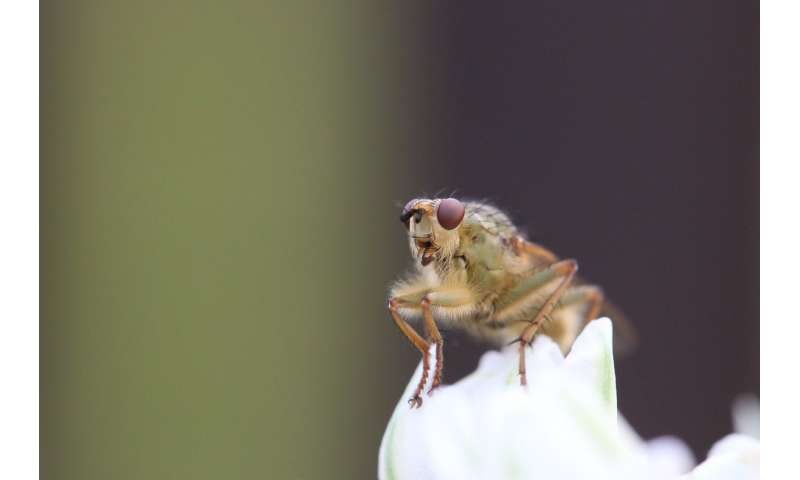Modeling heat death in fruit flies due to climate change
by Bob Yirka
A team of researchers from Chile, Hungary, and Spain has created a model to show the factors that can result in heat death in multiple species of fruit flies. In their paper published in the journal Science, the group describes using established mathematical models to predict heat death under different scenarios and comparing it with heat tolerance data from prior research efforts. Raymond Huey and Michael Kearney with the University of Washington and the University of Melbourne, respectively, have published a Perspective piece in the same journal issue outlining the work by the team in this effort.
As the planet continues to heat due to mankind's inability to control greenhouse gas emissions, scientists attempt to predict what the future might look like both for us and other creatures. In this new effort, the researchers looked at the impact of rising temperatures on creatures who do not have the option of living in artificially cooled homes: fruit flies.
To better understand what fruit flies (and most other creatures) might be facing, the researchers began with the knowledge that a warming world will bring with it variable temperatures. Creatures such as insects likely will not be killed by a single extremely hot day. The more likely scenario is that they will face multiple hot days over the course of weeks or even months. They note that each hot event can lead to cell damage and stress, both of which lead to shorter lives or an inability to reproduce. A given creature's ability to survive might depend on how quickly it can repair such damage. This means that models forecasting heat death must take into account variables such as exposure time, temperature and a functional constant that describes how sensitive a given creature is to temperature change. The researchers used such data to build their model. They also factored in real-world data describing critical maximum temperatures (the hottest temperature a creature can endure) for a host of insects.
The model compared favorably with results from prior studies that tested heat death in several species of fruit flies in the real world, suggesting a degree of accuracy. Huey and Kearney note that the model has its limitations, but it also gives climate scientists another tool to predict the impact of global warming on different species.
More information: Enrico L. Rezende et al. Predicting temperature mortality and selection in natural Drosophila populations, Science (2020). DOI: 10.1126/science.aba9287
aymond B. Huey et al. Dynamics of death by heat, Science (2020). DOI: 10.1126/science.abe0320
Journal information: Science
© 2020 Science X Network